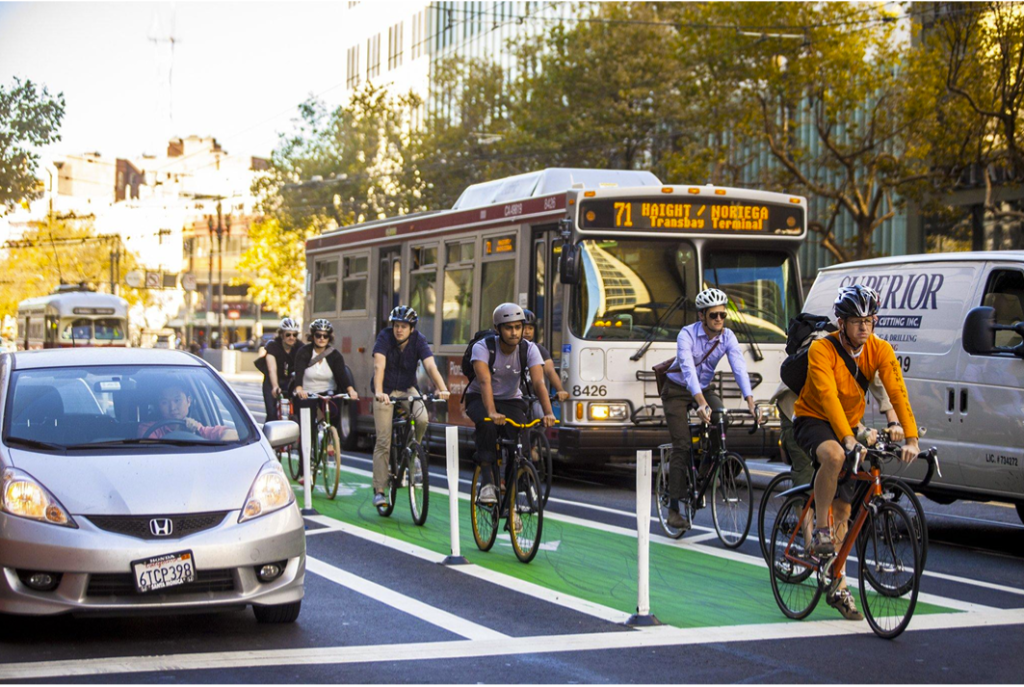While the Trump administration is trying to reshape the federal government, transportation infrastructure remains one of the most central roles of government. Transportation is clearly a top priority in Michigan right now, as Michigan leaders debate ways to raise and allocate $3 billion more for transportation. Yet despite $6 billion a year, Michigan’s transportation is not improving in public safety, job access, traffic congestion, public health, affordability, or pollution.
While more funding may be needed, we question the wisdom of business as usual transportation investments.
New Clean RIDES Network, in Michigan and Nationally

TRU is proud to join a dozen groups across Michigan and over 100 organizations nationwide to launch the Clean RIDES Network (Responsible Investments to Decrease Emissions in States), the first-of-its-kind network focused on large-scale, durable, multi-state transportation reform. Clean RIDES states include Michigan, Illinois, Minnesota, Pennsylvania, Maryland, New York, and California, which all have ambitious goals to reduce climate pollution and opportunities to improve state transportation policies to meet those goals.
Clean RIDES Network in Michigan is co-lead by TRU and the Ecology Center and includes NRDC, Michigan Environmental Council, Sierra Club, Detroit Greenways, Rails-to-Trails, West Michigan Environmental Action Council, and Southwest Detroit Environmental Vision, among others.
A new report from the Clean RIDES Network outlines new strategies that can save people money and time while cutting pollution from the transportation sector. This analysis highlights opportunities for states to adopt innovative new policies and practices that could significantly expand safer, cleaner, and more affordable transportation choices that better serve the public:
By investing in multimodal transportation systems and electrification, states could save consumers billions of dollars and substantially improve public health, safety, and the environment.

Opportunity for Progress
Our transportation has enormous room for improvement.
- Transportation is the second highest cost for most families, mostly due to the rising costs of operating a car, which currently averages over $12,000.
- The average American spends nearly an hour a day in commute time.
- 2023 marked a 40-year high in traffic related pedestrian fatalities, which have increased 60% over the past decade.
- Transportation is the leading cause of air-pollution-related deaths and the largest source of greenhouse gas emissions in the US.
Most Americans would like more transportation options, including improved transit services and cleaner vehicles. However, because communities have been built to prioritize car travel, most people have limited choices. By changing how federal, state, and local transportation agencies fund and plan transportation investments, state leaders can address these challenges and improve the lives of their constituents.
The Clean RIDES Network has identified opportunities to update transportation systems to save Americans time and money while reducing pollution in line with Michigan and US climate commitments.
Clean RIDES Analysis: Our Path Forward
Decision today will impact our climate, budgets, and health for decades to come. Clean RIDES Network members modeled the pollution impact of three scenarios of transportation policy:
- Holding the Line: Maintain Current Progress
- Continue funding and policy priorities in place at the end of 2024, including emissions standards and federal funding and incentives for electric vehicles and multimodal infrastructure.
- Going Backwards: Potential Rollbacks
- Rollbacks of pollution standards and clean mobility incentives as proposed by the Trump administration
- Meeting the Moment: Clean RIDES Policies
- Implement Clean RIDES policies of prioritizing options for people to walk, roll, take transit, and use clean electric vehicles

Compared to the Potential Rollbacks scenario, the Clean RIDES policy could cut transportation emissions by one-third, avoiding 1,500 MMT of cumulative emisions!
Clean RIDES policies would also:
- Save Money
- The average household would save $1,678 per year from reduced vehicle expenses!
- Improve Safety
- Improved access to safer transportation options would result in 84,000 fewer cumulative crash fatalities by 2050.
- Result in Cleaner Air, Better Health, and Faster Commutes
- Less tailpipe pollution would save over 22,700 lives through improved air quality.
- More active transportation would prevent 115,000 premature deaths from improved health outcomes.
- Reduced congestion would result in an annual average time saves equivalent to 28 hours of traffic avoided per person.

Policy Solution: What States Can Do
The benefits modeled in the Clean RIDES policy scenario won’t happen on their own. They require meaningful state-level policy reforms:
- Planning and Project Selection
- States should require transportation agencies to account for additional climate emissions that could result from road expansion projects or decreases from multimodal projects that reduce driving, as Colorado and Minnesota have done.
- States should also require all projects requesting transportation funding be reviewed through the same quantifiable, transparent, and outcome based evaluation, like Virginia has.
- Budgeting and Project Funding
- Budgets should expand bus and train routes and transition bus fleets to electric.
- Policies should reduce barriers to active transportation like offering e-bike incentives and implementing robust Complete Streets plans.
- States should make strategic investments to accelerate adoption of electric vehicles, offer electric car-share, and ensure access to convenient charging options.
- Land Use Reforms
- States and municipalities should adopt policies to eliminate parking minimums, as Austin TX and San Jose CA have.
- Policies that advancing housing projects through transit-oriented development can increase the number of affordable units and create higher-density areas.
State DOTs should also pursue reforms within their agencies improving transparency, transportation modeling, and clearer decision-making processes focused on improving affordability, safety, access, equity, and climate solutions.
TRU and our Clean RIDES partners in Michigan and nationwide look forward to working with Michigan leaders to develop ways to implement these smart, effective polities here.
This is a critical moment for the future of transportation. Issues of safety, reliability, and affordable face every community. With the federal government polluting back, states hold the keys to solving America’s largest transportation challenges.